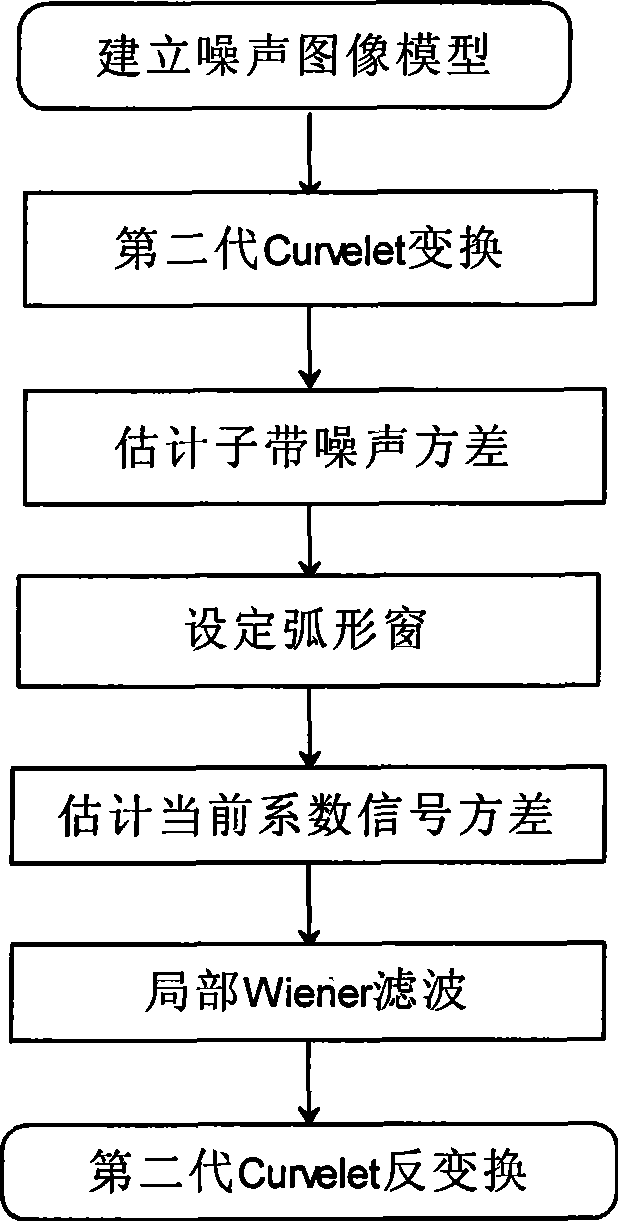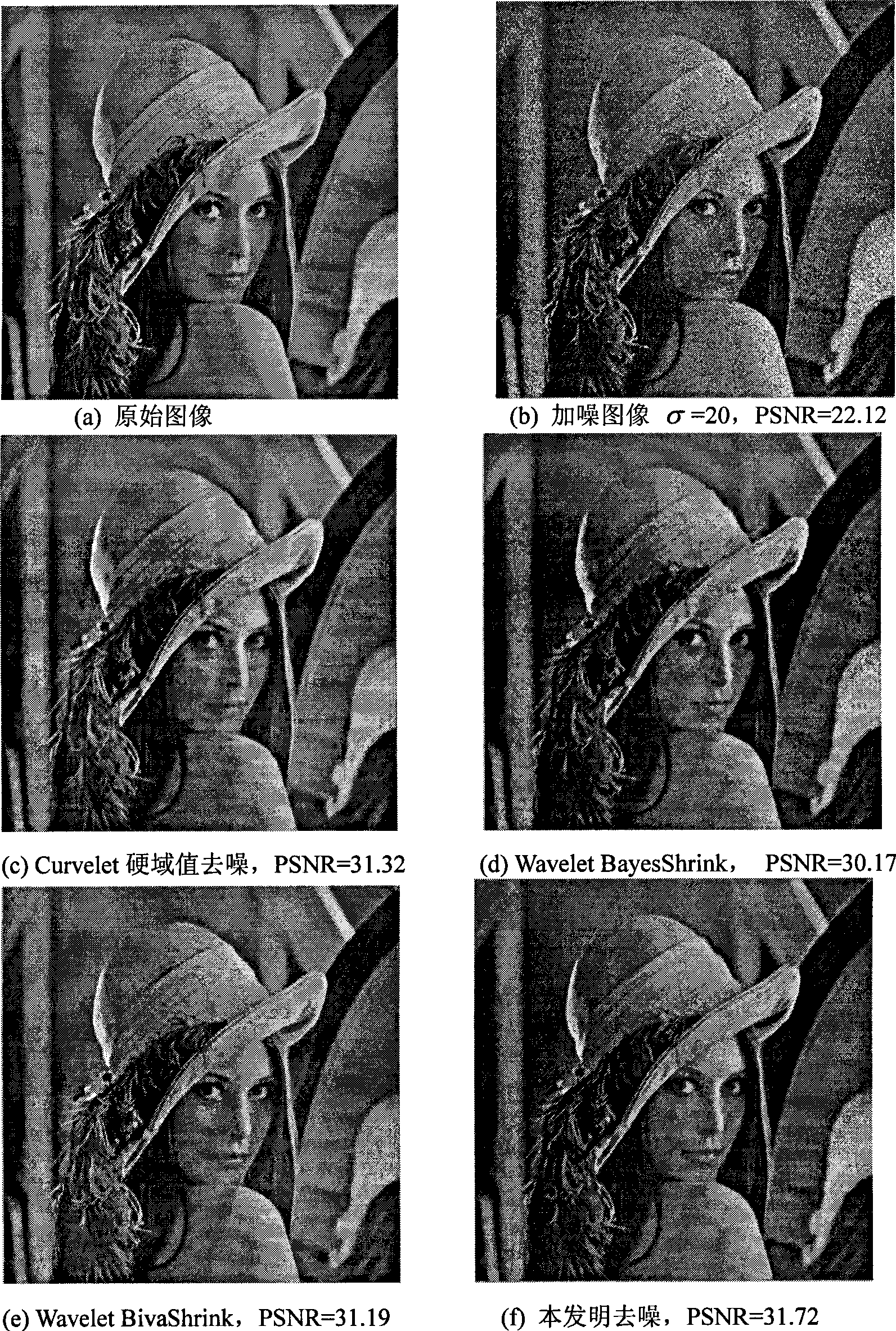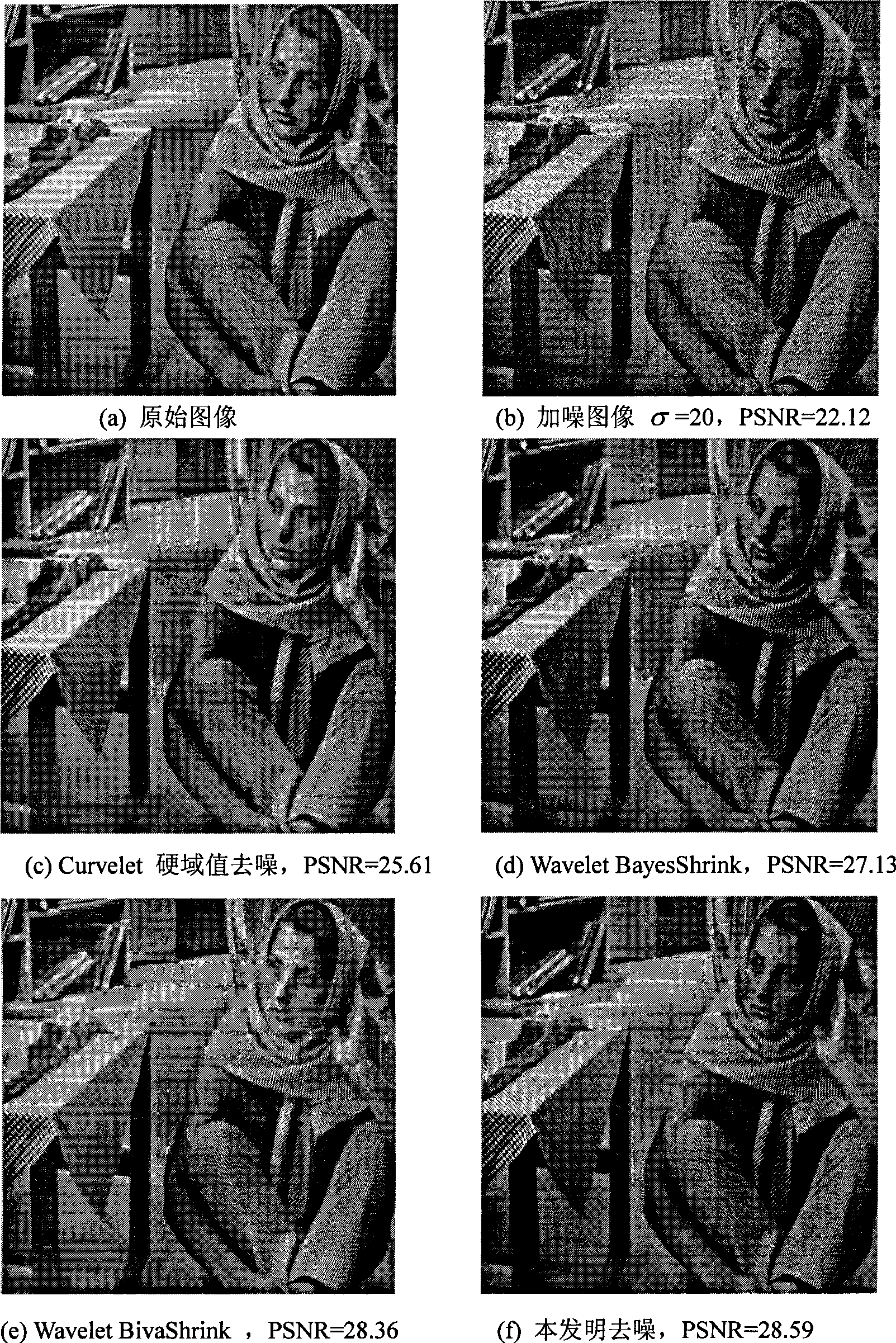Lunette local Wiener filtering method based on second generation Curvelet transformation
An arc-shaped window and arc-shaped technology, which is applied in image data processing, instruments, calculations, etc., can solve problems affecting image quality, blurring image edges, and coefficient killing, and achieves the effect of great flexibility
- Summary
- Abstract
- Description
- Claims
- Application Information
AI Technical Summary
Problems solved by technology
Method used
Image
Examples
Embodiment Construction
[0039] refer to figure 1 , the specific implementation steps of the present invention are as follows:
[0040] Step 1: Select the test object and add Gaussian noise to obtain a noise image. The mathematical expression of the noise image is:
[0041] f=g+n
[0042]where g={g(i, j)|i, j=1, 2,...N} represents the original image, n={n(i, j)|i, j=1, 2,...N } means zero mean and variance equal to σ 2 Gaussian noise of , the noisy image is recorded as f={f(i, j)|i, j=1, 2,...N}, and N represents the size of the image.
[0043] Step 2: Carry out the second-generation Curvelet transformation on the noise image to be processed, and obtain the Curvelet coefficient at the kth sub-band position (i, j) of the noisy image in the l layer:
[0044] C(l,k,i,j)=s(l,k,i,j)+ε(l,k,i,j)
[0045] where s(l, k, i, j) and ε(l, k, i, j) are the Curvelet coefficients of the original image and noise at the kth sub-band position (i, j) of layer l, respectively.
[0046] Step 3: Perform noise variance ...
PUM
 Login to View More
Login to View More Abstract
Description
Claims
Application Information
 Login to View More
Login to View More - R&D
- Intellectual Property
- Life Sciences
- Materials
- Tech Scout
- Unparalleled Data Quality
- Higher Quality Content
- 60% Fewer Hallucinations
Browse by: Latest US Patents, China's latest patents, Technical Efficacy Thesaurus, Application Domain, Technology Topic, Popular Technical Reports.
© 2025 PatSnap. All rights reserved.Legal|Privacy policy|Modern Slavery Act Transparency Statement|Sitemap|About US| Contact US: help@patsnap.com



